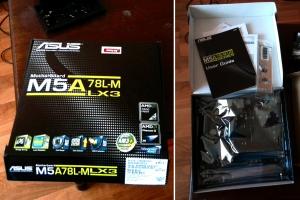Almost all desktop computers have fans. Their task is to blow on the radiators that are installed on the hottest chips, blow on the elements of the power supply, and also ensure the movement of air inside the computer case. All these fans create noise and in some cases it is so loud that it becomes difficult to work at the computer.
If you are faced with such a problem, then we suggest that you familiarize yourself with this material. Here you will learn how you can reduce the noise of the fans installed in your computer.
Before you start the fight to reduce fan noise, you need to do some preparatory work with the computer. First you need, which reduces the cooling efficiency.
To clean the computer from dust, unplug it from the power outlet and remove the side cover. The safest way to remove dust is with a can of compressed air. With it, you can blow through all the radiators and remove dust with minimal risk of damaging something. To carry out this procedure, it is better to go outside so as not to raise dust in the house.

Also, a brush for painting or drawing is sometimes used to remove dust from a computer case. Using a brush allows you to clean your computer without kicking up dust, but this method is less safe. The brush creates static electricity, which can damage your computer, so it's best to use a spray can.

After dust removal, check and . If it is above the norm, then .
Fan speed reduction
After you have brought the computer to a normal state, you can start reducing the noise from the fans. Here, one of the simplest and most effective ways is to reduce revs. This is done in two ways: software (through or from the operating system) and hardware (using a resistor or reobas).
The software method can only be applied to coolers that are connected to the motherboard via a 4-pin connector. At the same time, the process of controlling such coolers may differ depending on the motherboard. Usually in the BIOS you need to specify the temperature at which the fans will increase their speed. The minimum speed of the fans is also indicated, it is used until the specified temperature is reached. The screenshot below shows what these settings look like in the BIOS of an MSI motherboard.

If the fan is connected to a 3-pin motherboard connector or even directly to the power supply, then a resistor must be used to reduce its speed. Such a resistor can be independently selected and soldered into the power wire. Those who are not friends with a soldering iron can use ready-made adapters that only need to be connected between the fan and the motherboard.

Also, to reduce the speed of the fan, you can use the so-called reobas. This is a device that plugs into the 5.25 inch bay of the system unit and allows you to adjust the rotation speed of the fans connected through it.

Replacing fans with quieter ones
The fans that are used to cool computer components are very different in their noise level. This is mainly due to the type of bearings used. Conventional low-cost fans use plain bearings, while more expensive models use hydrodynamic bearings, which are noticeably quieter and retain their performance longer. Also, the size of the fan greatly affects the noise level, the larger it is, the quieter the fan runs.

All in all, replacing fans is a great way to reduce the amount of noise that comes out of a computer, but it comes at a cost.
Reducing the number of fans
Sometimes, you can reduce the noise level by reducing the number of fans that are used in the system unit. It is clear that it will not work to abandon the fans on the power supply, processor and video card. But, the number of case fans can be reviewed.

If you have a mid-level computer, without "top" hardware and overclocking, then one case fan will be enough for you, which will work to blow out hot air. And if you have an "office"-level computer, then you can try to do without case fans at all.









